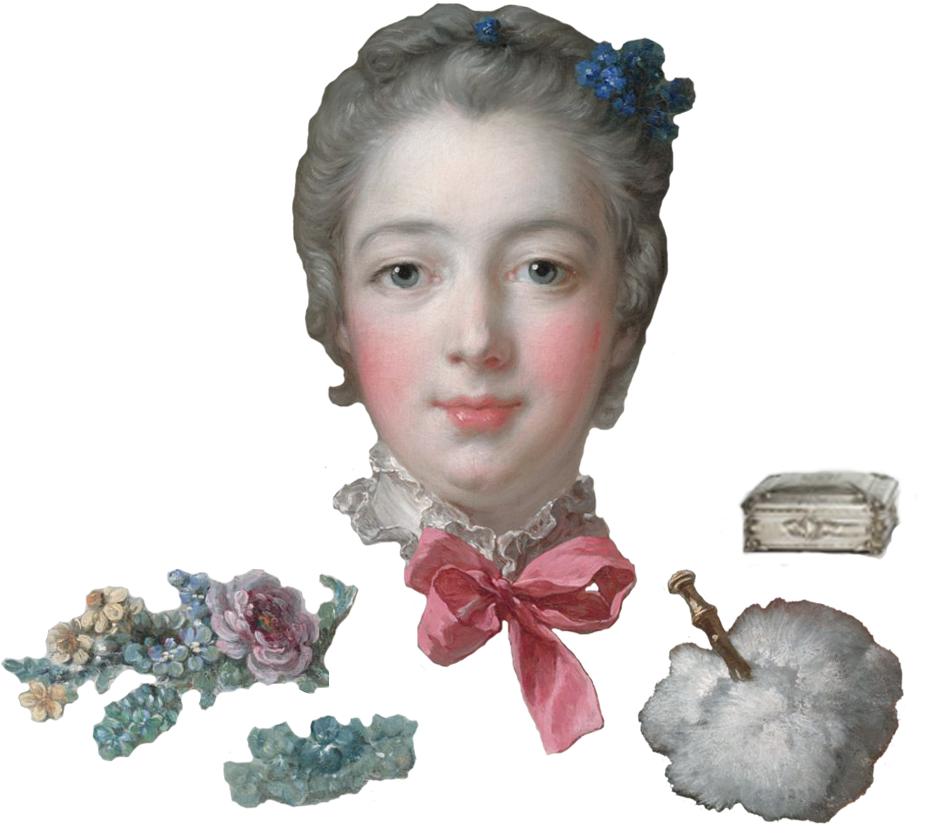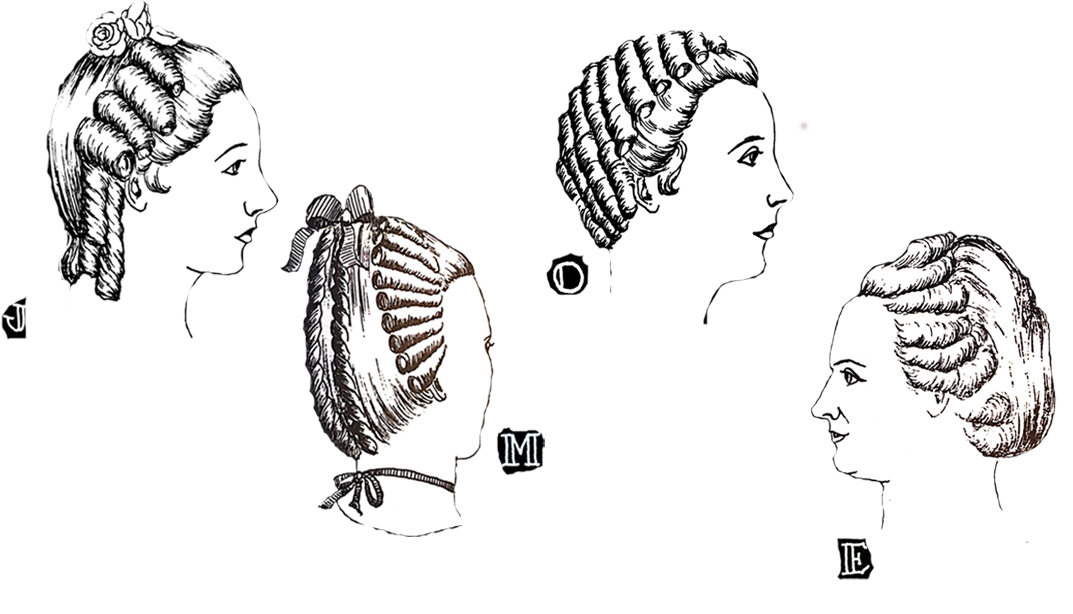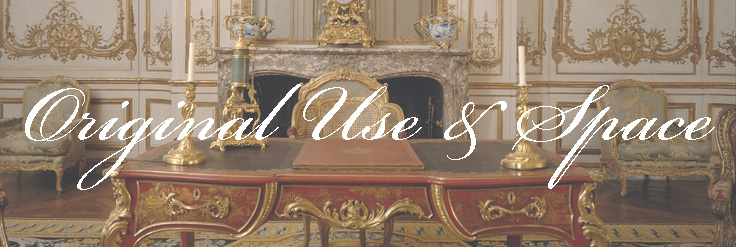
COIFFURE

Composite image of “Coiffure” accessories and accoutrements. Madame de Pompadour head and face, powder puff, and porcelain flowers from Francois Boucher painting, Jeanne-Antoinette Poisson, Marquise de Pompadour, ca. 1750. Harvard Art Museums. Silver hair powder box from Etienne Pollet, Toilette Service of the Duchesse de Cadaval, ca. 1738-1739. Detroit Institute of Arts. Composite image by Eugenie Pron.
The hair, or coiffure, was the most transient and creative part of Madame de Pompadour’s toilette. No one had more influence on determining hairstyles during the reign of Louis XV than Madame de Pompadour; “A hundred entrancing ways did she arrange her hair–now powdered, now in all its own silken glory, now brushed straight back, ears showing, now in curls on her neck…till the court nearly went mad attempting to imitate her inimitable coiffures.” The coiffure was the most time-consuming part of the toilette. Hair would be powdered during the preliminary toilette before the audience arrived and then fussed over by at least one hair-specializing maid, depending on how elaborate the ‘do. Madame de Pompadour wore her hair most often in a “relatively simple and tasteful” coiffure, consisting of a contained crown of curls with lace and ribbon or flowers weaved through (Corson).

Composite image of Madame de Pompadour’s favored hairstyles. Drawings extracted from Richard Corson’s book, “Fashions in Hair”. Digitally extracted and re-assembled. Composite image by Eugenie Pron.
THE POMPADOUR MYTH
Although Madame de Pompadour lends her name to the towering “Pompadour” updo, this fabled hairstyle only came into fashion in the 1770’s, years after the marquise’s death, likely in homage to her tremendous influence on styles during her lifetime. As headdresses seemed to rise higher to the point of becoming hazardous, the “pompadour” style became a popular subject of satire in caricatures (Roach, Powell).

Bibliothèque Nationale, Au Caffe Royal d’Alexandre, ca. 1787
Pages
practice
